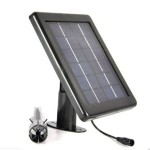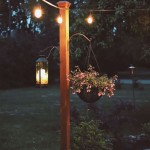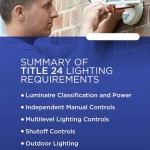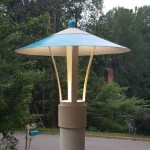What Kind of Outdoor Lights Don't Attract Bugs?
Outdoor lighting adds ambiance, security, and functionality to any outdoor space. However, a common problem with conventional outdoor lighting is its tendency to attract insects, creating a nuisance for homeowners and guests. Fortunately, there are several types of outdoor lights designed to minimize insect attraction, allowing you to enjoy your outdoor space without the annoyance of bugs.
Yellow Bug Lights
Yellow bug lights, also known as "bug-free lights," are a popular choice for reducing insect attraction. These lights emit a yellow or amber light, which is less appealing to insects than the blue and ultraviolet wavelengths found in traditional white light bulbs. The reason for this lies in the way insects perceive light. While humans see primarily in shades of blue and green, insects are more sensitive to ultraviolet light. This sensitivity makes them drawn to traditional white lights, which emit a significant amount of ultraviolet light. Yellow bug lights, on the other hand, emit less ultraviolet light, making them less appealing to insects.
Yellow bug lights are available in various forms, including incandescent, LED, and fluorescent bulbs. LED yellow bug lights are particularly energy-efficient and long-lasting, making them a popular choice for outdoor lighting. They are often used for applications like pathway lighting, porch lights, and security lighting. However, it's important to note that while yellow bug lights are effective in reducing insect attraction, they may not eliminate it completely. Some insects, like moths, can still be drawn to light, even if it is yellow.
Motion-Activated Lights
Motion-activated lights offer a practical solution for reducing insect attraction while providing security and convenience. These lights only illuminate when triggered by movement, minimizing the amount of time they are on and reducing the overall insect attraction. This is particularly beneficial in areas where insects are a frequent problem, such as near gardens or around patios. Motion-activated lights are available in various styles, including floodlights, spotlights, and pathway lights. They can be powered by electricity or solar energy, providing flexibility and energy savings. While motion-activated lights are effective in reducing insect attraction, they may not be suitable for all applications, such as decorative lighting or creating ambiance.
Low-Light Options
Low-light options, such as string lights, lanterns, and firepits, can create a warm and inviting atmosphere without attracting large numbers of insects. These options typically emit a soft, diffused light that does not attract insects as much as traditional bright lights. String lights, for example, can be draped across patios, trees, or around furniture, creating a festive and charming ambiance. Lanterns, both gas and electric, can provide a gentle glow, perfect for pathways or outdoor dining. Firepits, while not strictly lights, emit warmth and light, creating a social and welcoming atmosphere that discourages insects from gathering. While low-light options can reduce insect attraction, they may not provide the same level of illumination as traditional outdoor lights, making them unsuitable for applications like security lighting or pathway illumination.
Other Considerations
In addition to choosing the right type of light, there are several other factors that can help minimize insect attraction. These include:
- Time of Day: Insects are most active at dusk and dawn. Avoiding using bright lights during these times can significantly reduce insect attraction.
- Plant Maintenance: Overgrown vegetation and standing water can attract insects to your yard. Regularly trimming trees and shrubs and removing standing water can help reduce the insect population.
- Light Direction: Directing light downwards minimizes the surface area exposed to the light, reducing insect attraction. This can be achieved by using shielded lights or strategically positioning your lighting fixtures.
- Bulb Color: While yellow bug lights are effective, other warm colors, such as amber or red, can also reduce insect attraction.
By choosing the right type of outdoor lights and considering the related factors, you can significantly reduce the number of insects attracted to your outdoor space. This allows you to enjoy your yard, patio, or garden without the annoyance of buzzing and biting insects. Experiment with different options and find what works best for your specific needs and preferences.

Are There Outdoor Lights That Don T Attract Bugs Dusk Lighting Blog

Do Led Lights Attract Bugs Outdoor Lighting

Do Led Lights Attract Bugs 1000bulbs Blog

Do Led Lights Attract Bugs Super Bright Leds

Outdoor Lighting That Doesn T Attract Bugs

Outdoor Lighting Options That Won T Attract Bugs Vulcan Termite Pest Control

Do Led Lights Attract Bugs Outdoor Lighting

Do Led Lights Attract Bugs Super Bright Leds

6 Outdoor Lights That Don T Attract Bugs Balcony Boss

How To Find Outdoor Lights That Don T Attract Bugs Decorating Elves







